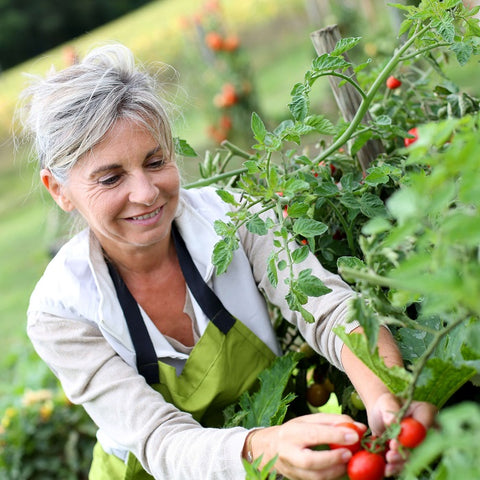By using these simple techniques, keep all your vegetables hydrated and healthy.The following content also has some reference value for raised garden beds.
How do you know when to water your vegetables and how much water to use? This is not difficult, but there are some specific subtle differences in watering vegetables, and you should be aware of these subtle differences to fully utilize your watering efforts. For example, watering seedlings is different from watering already planted vegetables. Watering in a bed is different from watering in a container. Watering in the morning is better than watering at noon.
Understanding these differences will maximize watering efficiency. Here are the most serious mistakes to avoid, so that your vegetables can get all the water they need for a healthy harvest.
- Seedlings with insufficient or excessive watering.
Because they have just started to take root, newly planted seedlings and seedlings need a stable water supply, don't let them dry up! Gently water the seedbed every morning and recheck it at night. If a dry shell forms on the surface of the soil, it is difficult for new seeds to germinate. If the sprouting seed dries, it may die.
On the other hand, do not let the soil become too damp; Excessive watering of the seedbed can lead to diseases such as withering, which is a fungus that kills seedlings. The key is to keep the soil evenly moist until the seedlings grow healthy roots.
I don't know how often to water the vegetable garden.
You must know how often to water the garden in order for the plants to grow successfully. Although daily watering is crucial for seedling germination, different watering methods should be adopted for already built plants. Frequent shallow watering may revive plants in the short term, but it can also promote shallow root growth. This can cause plants to quickly dry out when the soil surface is dry, which can occur quickly on hot and sunny days.
When you water deeply, the roots will grow a few inches beyond the top, where they are better protected from rapid fluctuations in water and are less likely to dry up. Considering rainfall, deep soaking two to three times a week will promote healthier and more productive growth than frequent shallow watering.
- Do not use a rain gauge.
Most vegetables grown underground require about an inch of water per week, whether it's rainwater or irrigation. Of course, it depends on your soil - sandy soil dries faster than clay. (Elevated beds and container gardens require more water, see below). Use a rain gauge to record the rainfall in the garden; Record the rainfall (just take a note in your garden diary) so you know how often to water the garden to get extra water.
- Water containers and raised beds.
Vegetables and herbs grown in containers or raised beds require more water than those grown on the ground. Why? Firstly, the drainage rate of the soil mixture used in the container and raised bed is faster than that of the soil in the ground bed. Secondly, because their soil is higher than the ground, the temperature will rise rapidly in warm days, increasing evaporation.
Regularly check the humidity level in containers and raised beds by inserting a hygrometer or finger into the soil for a few inches. If the soil is dry, it's time to water it.
- Water during the hottest time of the day.
The best time to water the garden is in the morning, as leaves that may get wet have enough time to dry before evening. Watering efficiency is low during hot days; Water evaporates faster and reaches the roots with less water. At night, as the temperature drops, the evaporation rate slows down again, but colder temperatures at night are also conducive to the spread of some leaf diseases. If you must water at night, avoid wetting the leaves.
- Wet the leaves.
Plants obtain water through their roots rather than their leaves. Directly water the soil surface to avoid wetting the leaves, as water can help spread some plant diseases. Use watering sticks to reach the ground, or use soaking hoses or drip irrigation systems to wet the soil instead of leaves.
- Splash soil onto leaves.
The soil will breed many plant disease. If your watering splashes soil on the leaves of plants, these diseases will spread, so use a mild spray or soaking hose. In addition, covering crops with a two inch cover can easily lead to several leaf diseases, such as tomatoes, which can help prevent soil splashing during watering or rain.
Plant a vegetable garden in a place that receives at least 6 hours of sunlight per day. This place should have a good drainage system. As long as the soil and sunlight are suitable, you can add vegetables to the existing plant bed. Ensure that the hose can be easily used, so you won't have trouble getting water from plants.









